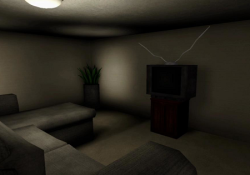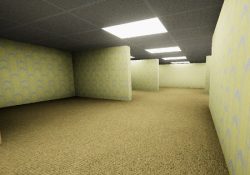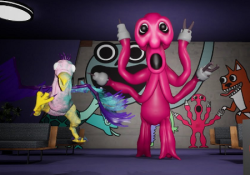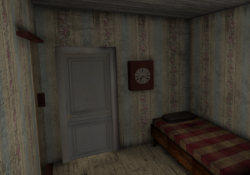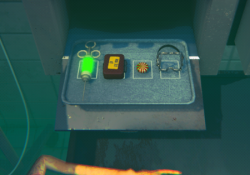Terror is a first-person horror game that places the player in an abandoned facility with no clear direction or context. From the moment the game begins, darkness becomes your constant companion. Players are left to piece together fragmented clues scattered throughout dimly lit hallways, encountering locked doors, broken lights, and sudden sounds that suggest they are not alone. The sense of isolation builds steadily as progression reveals signs of a past experiment or tragedy that went horribly wrong.
A Gameplay Structure That Builds Suspense
Rather than relying on scripted scares, the game builds dread through exploration and interaction. Players must manage limited flashlight power, solve environmental puzzles, and decode cryptic messages left behind. The minimal interface and lack of direction enhance the sense of immersion, forcing players to rely on their own instincts. While there are no traditional enemies early on, the tension comes from the unknown — and the realization that something may be watching.
Tools and Tactics for Survival
To progress in Terror, players must become familiar with their surroundings and resource management. Essential tools and elements include:
- A flashlight with a limited battery life
- A journal system for recording clues
- Doors that require keypad combinations or keycards
- Audio cues that warn of nearby threats
- Interactive objects that may reveal backstory
Each item plays a role in survival and puzzle-solving, encouraging slow, thoughtful exploration rather than quick movement.
A Story Told Through Silence
The game’s narrative is not delivered through cutscenes or voice-overs, but through found notes, ambient storytelling, and changes in the environment. As players explore deeper into the structure, patterns begin to emerge — references to psychological tests, missing workers, and an entity known only by a codename. The visuals change subtly with each level, becoming more surreal and hostile as players descend. Hallways twist in unnatural ways, objects disappear and reappear, and visual static becomes more frequent, suggesting the presence of a malevolent force.
The Final Descent
Terror culminates in a decision-driven ending, determined by the paths players take and what they choose to interact with. Some players may discover hidden rooms that offer additional context, while others may rush ahead and trigger different consequences. The design of the game allows for multiple endings that vary in tone — some conclusive, others cryptic. The lasting impression of Terror is not a single scare or monster, but a growing discomfort that remains even after the game is over. It’s a quiet horror experience that relies on the player’s imagination as much as the game’s design.




